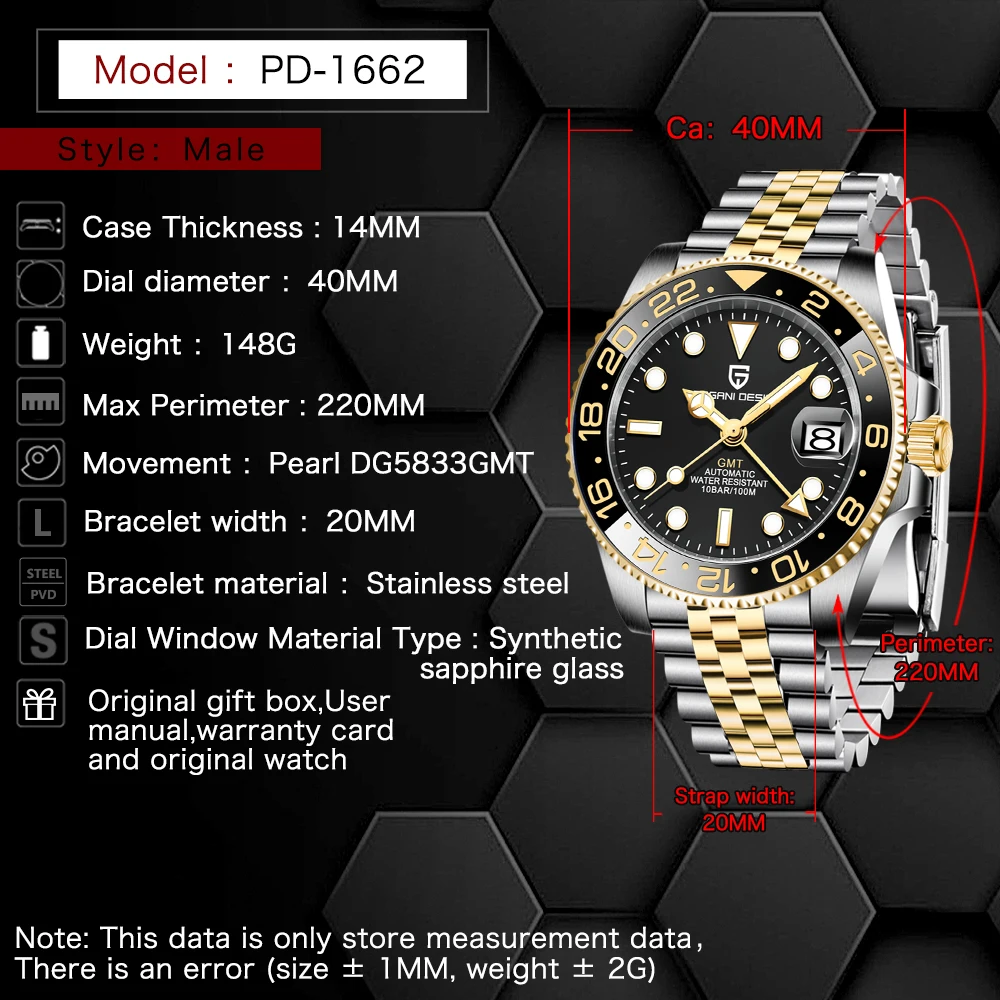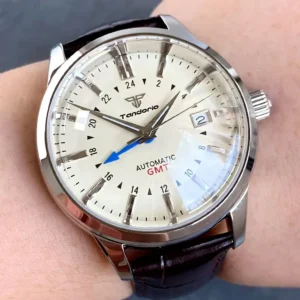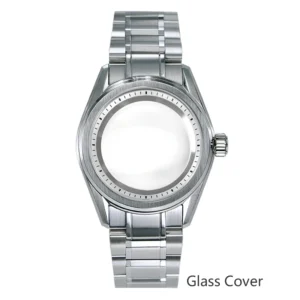Understanding Specialized Watch Functions
The world of watches extends far beyond simple timekeeping, with specialized timepieces designed to meet specific professional and lifestyle needs. Two of the most distinct and popular watch categories are GMT watches and dive watches, each engineered to solve particular challenges through innovative functionality.
GMT watches, named after Greenwich Mean Time (the historical reference time zone), were developed to help travelers and professionals track multiple time zones simultaneously. These watches feature additional hands and special bezels that allow wearers to monitor time in different parts of the world at a glance – an invaluable tool in our increasingly connected global environment.
Dive watches, on the other hand, were created with underwater exploration in mind. They feature robust construction, exceptional water resistance, and specialized timing mechanisms that help divers monitor their underwater time safely. Every element of a dive watch’s design serves the crucial purpose of providing reliable timing information in challenging aquatic environments.
As interest in specialized watches continues to grow among enthusiasts and professionals alike, understanding the differences between these two functional timepieces becomes increasingly important. This guide aims to provide a comprehensive comparison of GMT functionality in dive watches and standard dive watch capabilities, helping you determine which best suits your specific needs.
What Is a GMT Watch?
GMT watches were originally developed for pilots and aviation professionals who regularly crossed multiple time zones. These specialized timepieces derive their name from Greenwich Mean Time, which served as the global time standard before being largely replaced by Coordinated Universal Time (UTC).
The defining feature of a GMT watch is its ability to track multiple time zones simultaneously. This functionality is achieved through an additional hour hand that completes one full rotation every 24 hours (rather than the standard 12 hours). This specialized GMT hand works in conjunction with a 24-hour scale, typically found on the watch’s bezel or dial, allowing wearers to read a second time zone instantly.
Key components of a standard GMT watch include:
- 24-Hour GMT Hand: An additional hand, often colored differently for easy identification, that makes one complete rotation per day
- 24-Hour Scale: Markings that allow the GMT hand to be read in 24-hour format, preventing confusion between AM and PM
- Bidirectional Rotating Bezel: On many GMT models, the bezel can rotate in either direction, allowing for tracking of a third time zone
- Independent Hour Hand: In “true GMT” models, the main hour hand can be adjusted separately from other hands, making time zone changes convenient
GMT watches are particularly valuable for international travelers, pilots, business professionals conducting global operations, and anyone who regularly communicates across different time zones. The ability to tell at a glance whether it’s day or night in another location makes scheduling calls and meetings across continents significantly easier.
Understanding how GMT functionality works helps appreciate the ingenious mechanical solution these watches provide to the modern challenge of global time management.
For those interested in exploring this functionality firsthand, our selection of GMT automatic watches offers numerous examples of this sophisticated complication.
What Is a Dive Watch?
A dive watch is a specialized timepiece engineered specifically for underwater use, with features focused on safety, durability, and underwater readability. Originally created as essential timing tools for scuba divers, these watches continue to serve both professional and recreational diving needs while gaining popularity for their robust design and versatile style.
True dive watches must meet strict standards, often conforming to the ISO 6425 certification which establishes minimum requirements for watches labeled as “divers’ watches.” This international standard ensures the watch can reliably perform in challenging underwater environments.
The key features that define a genuine dive watch include:
- High Water Resistance: Minimum 100 meters (330 feet), though professional models typically offer 200-300 meters or more
- Unidirectional Rotating Bezel: A critical safety feature that rotates only counterclockwise, preventing accidental extension of dive time
- Luminous Markers: Highly visible hands and hour markers coated with luminescent material for readability in low-light underwater conditions
- Screw-Down Crown: Ensures water-tightness by screwing the crown securely into the case
- Robust Construction: Cases made from highly durable materials like stainless steel or titanium
- Secure Strap or Bracelet: Designed to remain securely on the wrist even under pressure
The evolution of dive watch technology reflects decades of refinement aimed at creating reliable underwater timing instruments. Modern dive watches balance traditional functionality with contemporary materials and manufacturing techniques to produce highly dependable timekeeping tools.
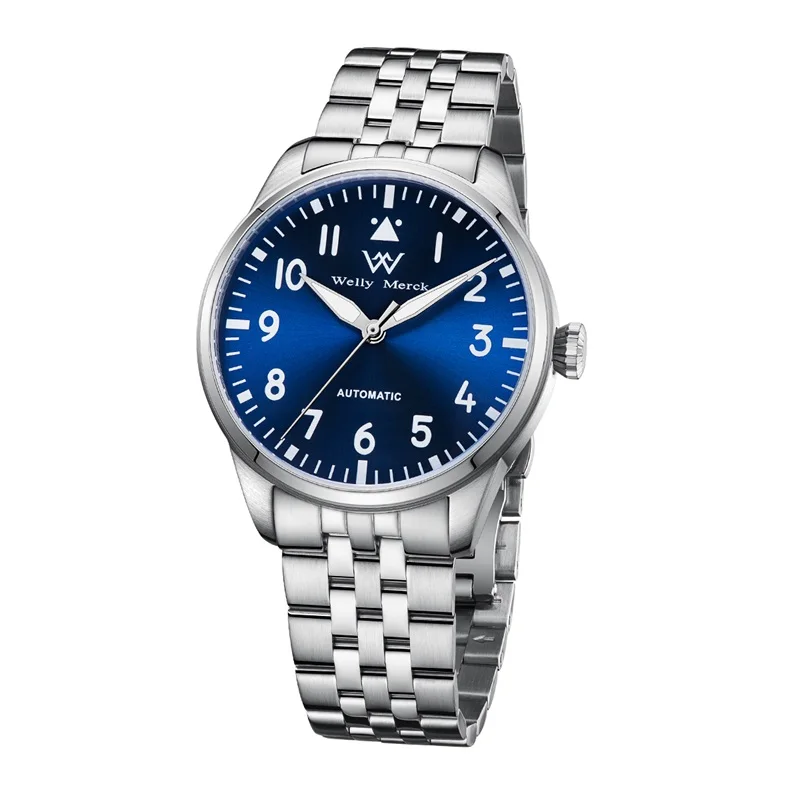
Sharp Aspect offers a variety of automatic dive watches that exemplify these essential features while maintaining exceptional quality and styling.
GMT Watch Core Functionality: Multi-Time Zone Tracking
The primary purpose of a GMT watch is to provide clear, simultaneous tracking of multiple time zones. This functionality is achieved through a specialized movement and dial arrangement that works differently from standard watches.
At its core, a GMT watch uses its additional 24-hour hand to track a second time zone. Here’s how this system typically works:
- Standard hands: The regular hour, minute, and second hands show your local time as normal
- GMT hand: The additional hand points to the 24-hour scale, typically showing your reference time (often home time or GMT/UTC)
- Bezel adjustment: On models with rotating bezels, turning the bezel allows you to track a third time zone
GMT watches come in two main movement types:
- Traveler GMT (or “True GMT”): The local hour hand can jump forward or backward in one-hour increments independently, making it ideal for travelers changing time zones
- Caller GMT: The GMT hand can be set independently while the main hands remain synchronized, better for those who stay in one place but communicate with people in different time zones
The practical applications of these watches extend beyond travel. Business professionals use them to coordinate international meetings, pilots rely on them for flight planning, and global remote workers use them to manage collaboration across continents. The benefits of GMT watches for travelers are particularly significant, eliminating the mental calculations otherwise needed when working across time zones.
This elegant solution to time zone management represents one of horology’s most practical complications, combining mechanical ingenuity with everyday utility.
Dive Watch Core Functionality: Underwater Timing and Safety
The fundamental purpose of a dive watch is to provide reliable timing information underwater, particularly for tracking immersion time. This seemingly straightforward function is crucial for diver safety, as it helps prevent decompression sickness by ensuring divers don’t exceed their planned bottom time.
The unidirectional rotating bezel is the defining feature that enables this timing function. Here’s how divers typically use it:
- Before descent, the diver aligns the bezel’s zero marker with the minute hand
- As time passes, the minute hand moves around the dial while the bezel stays fixed
- The diver can read elapsed time at a glance by looking at where the minute hand points on the bezel
- The unidirectional (counterclockwise-only) mechanism ensures that accidental bumps can only make the dive appear longer than it actually is – a critical safety feature
Professional dive watches must undergo rigorous testing to ensure reliable performance under pressure. The water resistance rating on a dive watch indicates static pressure testing, but actual diving involves dynamic pressure changes. This is why true dive watches are rated well beyond typical diving depths – a 200m (660ft) rated watch might be recommended for recreational diving to 30-40m (100-130ft).
Other crucial features include highly legible dials with strong contrast between hands and backgrounds, robust luminescent materials that remain visible in murky conditions, and secure crown systems that prevent water ingress. Many professional-spec dive watches also include helium escape valves for saturation diving and reinforced case construction for extreme pressure resistance.
While modern divers often use digital dive computers as their primary instruments, mechanical dive watches continue to serve as reliable backup timing devices that don’t depend on batteries or electronics that might fail.
Key Design Features: GMT vs Dive Watch
The distinct functions of GMT and dive watches have led to significantly different design approaches, each optimized for their intended purpose. These differences appear across nearly every aspect of the watches, from bezel design to case construction.
| Feature | GMT Watch | Dive Watch |
|---|---|---|
| Bezel | Bidirectional with 24-hour markings | Unidirectional with minute markings |
| Water Resistance | Typically 50-200m | Minimum 100m, often 200-300m+ |
| Hands | Additional GMT hand | Highly visible, distinct hands |
| Dial | Focus on multiple time displays | High contrast for underwater visibility |
| Crown | Standard or screw-down | Screw-down with guards |
| Case | Varied designs, often thinner | Robust, thicker construction |
| Lume | Applied to key elements | Extensive application for low-light use |
| Bracelet/Strap | Various options | Secure closures, extension systems |
GMT watches often feature more complex dials to accommodate additional time information, while dive watches prioritize legibility under challenging conditions. The GMT bezel typically rotates in both directions to facilitate setting additional time zones, while dive bezels rotate only counterclockwise as a safety feature.
Case construction also differs significantly. Dive watches feature robust cases with reinforced casebacks, often thicker to withstand water pressure. GMT watches, while still durable, can be more streamlined as they don’t need to withstand the same extreme conditions.
Understanding how GMT functionality works on dive watches reveals how manufacturers sometimes blend these design philosophies to create versatile timepieces that serve multiple purposes.

Water Resistance Comparison
Water resistance represents one of the most significant functional differences between GMT and dive watches, directly reflecting their intended environments and use cases.
| Water Resistance | GMT Watches | Dive Watches |
|---|---|---|
| Typical Rating | 50-200m (165-660ft) | 200-300m+ (660-1000ft+) |
| Testing Standards | Basic water resistance | ISO 6425 certification |
| Pressure Testing | Static pressure only | Static and sometimes dynamic |
| Intended Water Use | Casual swimming, light water exposure | Professional diving, extended submersion |
GMT watches, designed primarily for air travel rather than water activities, generally offer moderate water resistance. Most provide sufficient protection for everyday encounters with water and some can handle recreational swimming. However, they typically lack the specialized sealing systems and case reinforcement necessary for serious underwater activities.
True dive watches must meet the ISO 6425 standard, which includes rigorous testing far beyond simple water pressure tests. This standard requires testing for condensation resistance, thermal shock resistance, and pressure testing at 125% of the rated depth. Additionally, dive watches must undergo regular checks during actual use – their water resistance can diminish over time due to gasket wear and case stress.
It’s important to understand that water resistance ratings represent static pressure testing in laboratory conditions. Activities like swimming create dynamic pressure that can exceed the rated capacity of a watch with equivalent depth. This is why many manufacturers of watches that combine GMT and dive functionalities ensure their hybrid models maintain the higher water resistance standards of true dive watches.
For most users, the moderate water resistance of GMT watches proves sufficient for daily activities, while those regularly engaging in water sports or diving should prioritize proper dive watch specifications.
Bezel Functionality: Directional Rotation and Markings
The bezel – the rotating ring surrounding the watch face – represents perhaps the most visually and functionally distinct element between GMT and dive watches, with each designed for entirely different purposes.
GMT watch bezels typically feature:
– Bidirectional rotation: Can be turned clockwise or counterclockwise
– 24-hour scale: Numbered from 1-24 or 0-23
– Purpose: Tracking an additional time zone beyond what the dial and GMT hand show
– Materials: Often aluminum, steel, or ceramic for durability and legibility
Dive watch bezels, by contrast, include:
– Unidirectional rotation: Can only turn counterclockwise
– 60-minute scale: Marked in one-minute or five-minute increments
– Purpose: Tracking elapsed time underwater as a safety measure
– Materials: Highly durable materials resistant to saltwater, with grip patterns for use with wet hands
The directional rotation difference is particularly significant. GMT bezels rotate bidirectionally for convenience when adjusting time zones. Dive bezels rotate only counterclockwise as a safety feature – if accidentally bumped, they can only indicate more time has elapsed than actually has, encouraging earlier ascent rather than risking extended bottom time.
Modern manufacturing has seen advances in bezel materials and construction. Ceramic bezels have become popular in both watch types for their scratch resistance and color retention. However, dive watch bezels typically feature more pronounced grip patterns and larger markings for manipulation and visibility underwater.
For those wondering whether GMT watches can be used for diving activities, the bezel functionality represents one of the most significant limitations – the bidirectional bezel lacks the safety feature critical for timing dives.
Legibility and Dial Design
Dial design and legibility considerations differ dramatically between GMT and dive watches, reflecting their specialized purposes and operating environments.
Dive watch dials prioritize:
– Maximum contrast: Usually featuring white or bright-colored hands against dark backgrounds
– Simple layouts: Minimal text and uncluttered design for instant readability
– Large indices: Oversized hour markers for visibility in poor conditions
– Differentiated hands: Distinct shapes for hour, minute and seconds hands to prevent confusion
– Abundant luminescence: Heavy application of luminous material on all critical elements
GMT watch dials balance:
– Information density: Displaying multiple time zones clearly
– 24-hour markings: Additional scales for the GMT hand reference
– Color coding: Often using contrasting colors to distinguish between day/night hours or different hands
– Legibility across environments: Designed for reading in varied lighting conditions while traveling
While both watch types utilize luminous materials for low-light visibility, the application differs substantially. Dive watches feature extraordinarily bright and long-lasting luminescence on all critical elements, as underwater darkness demands immediate readability. GMT watches typically apply luminescence more selectively, focusing on key elements needed for nighttime reference.
Text elements also differ noticeably. Dive watches minimize text to reduce dial clutter, typically displaying only essential information like water resistance rating and “automatic.” GMT watches often include more descriptive text, sometimes noting their chronometer certification or multiple time zone capability.
For enthusiasts interested in traditional designs, our classic style dive watches showcase the enduring appeal of these highly legible dial layouts.
Hybrid Models: GMT Dive Watches
Recognizing that many watch enthusiasts appreciate both international travel and water activities, watchmakers have developed hybrid GMT dive watches that combine the functionality of both styles. These versatile timepieces represent an elegant solution for those who don’t want to choose between specialized functions.
GMT dive watches cleverly integrate:
– The multiple time zone tracking of GMT watches
– The water resistance and durability of dive watches
– Bezels that accommodate both timing and GMT functions
– Enhanced legibility that works in various environments
Manufacturers achieve this fusion through several design approaches. Some use a GMT hand with a traditional dive watch bezel, requiring the wearer to mentally track the second time zone without bezel assistance. Others feature a 24-hour inner bezel ring with a traditional diving outer bezel. The most sophisticated models incorporate complex bezel systems that can serve both functions or movable inner bezels controlled by additional crowns.
These hybrid watches must overcome significant design challenges. They need to maintain the water resistance and durability of dive watches while incorporating the more complex GMT movement. Additionally, the dial must remain legible despite displaying more information than a standard dive watch.
The advantages of having GMT functionality in dive watches are particularly evident for travelers who enjoy diving vacations or water activities in different time zones. For these users, the hybrid design eliminates the need to pack multiple specialized watches.
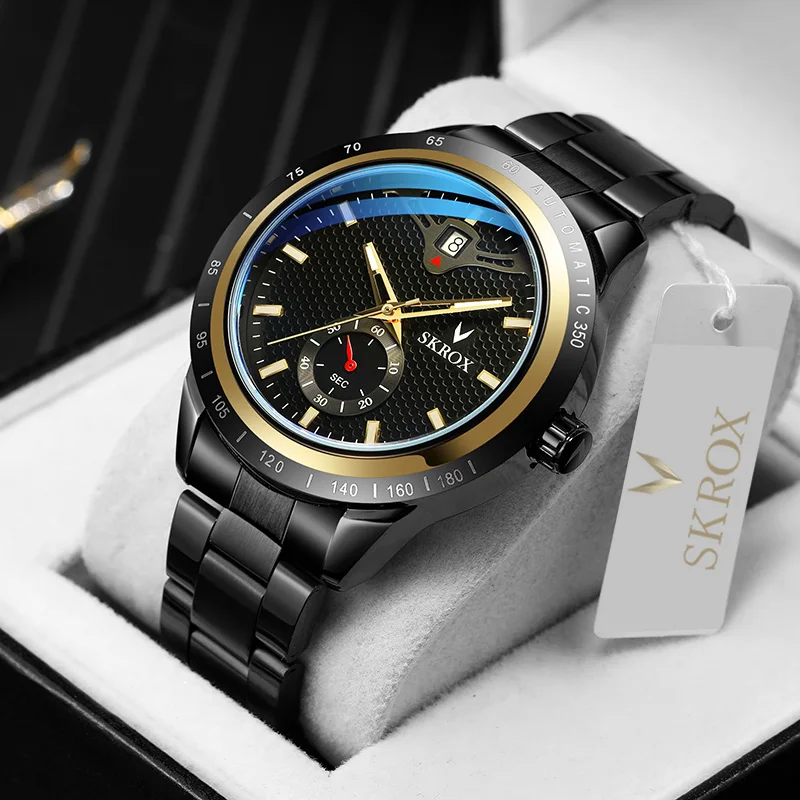
Daily Wearability and Versatility
Beyond their specialized functions, both GMT and dive watches have gained popularity as daily wear timepieces. Their everyday practicality differs in several important aspects:
GMT watches typically offer:
– Sleeker profiles: Generally thinner cases that slide easily under shirt cuffs
– Versatile styling: Often designed to transition between business and casual settings
– Moderate weight: Generally lighter construction for all-day comfort
– Varied sizes: Available in a broader range of case diameters to suit different wrists
Dive watches generally provide:
– Bold presence: Larger, more substantial cases with pronounced features
– Casual orientation: Sporty aesthetics that may not complement formal attire
– Heavier construction: Robust build that some find reassuring, others cumbersome
– Greater durability: Increased resistance to bumps, scratches and environmental factors
The context versatility varies significantly between these watch types. GMT watches often feature polished elements and refined finishing that help them transition seamlessly from boardroom to casual settings. Their functionality also remains relevant throughout the day for anyone communicating internationally.
Dive watches, with their tool watch heritage, generally project a more casual, sporty aesthetic. However, their bold styling has gained acceptance in increasingly casual professional environments. Their exceptional durability makes them ideal for active lifestyles where the watch might endure rough conditions.
For those interested in the style elements that distinguish these watch types, our guide to GMT vs. dive watches differences explores these aesthetic considerations in greater detail.
Classic Automatic Dress Watches, GMT Automatic Watches, GMT Pilot Watches
Price range: $1,240.86 through $1,463.33 Select options This product has multiple variants. The options may be chosen on the product pageAutomatic Chronograph Watches, Classic Style Dive Watches
$3,053.06 Select options This product has multiple variants. The options may be chosen on the product pageBronze Automatic Watches, Military Inspired Automatic Watches, Professional Spec Dive Watches
Price range: $1,442.21 through $1,442.82 Select options This product has multiple variants. The options may be chosen on the product pageProfessional Spec Dive Watches, Titanium Automatic Watches
$574.74 Select options This product has multiple variants. The options may be chosen on the product pageClassic Automatic Dress Watches, GMT Automatic Watches, GMT Dive Watches
Price range: $468.93 through $552.94 Select options This product has multiple variants. The options may be chosen on the product pageGMT Automatic Watches, Unique Automatic Watches
$420.10 Select options This product has multiple variants. The options may be chosen on the product page
Which Is Right For You? Lifestyle Assessment
Choosing between a GMT watch and a dive watch ultimately depends on your lifestyle, activities, and personal preferences. Consider how these watch types align with different user profiles:
International Business Professional
– Regularly crosses time zones or communicates globally
– Values the ability to track home office time and client locations simultaneously
– Appreciates a watch that complements business attire
– Recommendation: A GMT watch with classic styling and moderate water resistance
Water Sports Enthusiast
– Regularly participates in swimming, snorkeling, or diving
– Values durability and water resistance above all
– Needs a watch that can withstand rough conditions
– Recommendation: A purpose-built dive watch meeting ISO standards
Frequent Traveler Who Enjoys Water Activities
– Combines international travel with recreational water sports
– Values versatility and multi-functionality
– Doesn’t want to switch watches between activities
– Recommendation: A hybrid GMT dive watch offering both functions
Urban Professional with Occasional Travel
– Primarily stays in one location but travels periodically
– Values style versatility for different professional and social settings
– Appreciates watchmaking craftsmanship and technical features
– Recommendation: A GMT watch with good water resistance (100m+)
Ask yourself these questions when deciding:
– How frequently will you use the specialized functions?
– Which environment presents the greater challenge for your watch – water exposure or time zone changes?
– Do you prefer a watch that makes a bold statement or one with more subtle styling?
– How important is versatility across different dress codes and situations?
For those seeking more guidance on matching watch functionality to specific activities, our GMT dive watch use cases guide provides detailed scenarios and recommendations.
What Is a “True GMT” vs. “Caller GMT”?
For those considering a GMT watch, understanding the difference between “True GMT” and “Caller GMT” movements reveals important functional distinctions that affect everyday usability.
True GMT (also called “Traveler GMT”):
– The local hour hand can be adjusted independently in one-hour increments
– When traveling, you can quickly adjust local time without stopping the watch
– The GMT hand maintains home time or reference time zone
– Date changes are synchronized with the local hour hand
– Generally considered more convenient for frequent travelers
Caller GMT:
– The GMT hand can be set independently
– Changing time zones requires adjusting the entire time (hours, minutes, seconds)
– More affordable and common in entry and mid-range GMT watches
– Ideal for those who primarily stay in one location but track other time zones
The practical difference becomes apparent when traveling. With a True GMT, upon landing in a new time zone, you can simply jump the hour hand forward or backward without stopping the seconds hand or disturbing the minute hand’s position. With a Caller GMT, changing time zones requires stopping the watch and resetting the main time completely.
True GMT movements are typically found in higher-end watches due to their more complex mechanism. For occasional travelers, a Caller GMT may be perfectly adequate, while frequent international travelers often appreciate the convenience of a True GMT function.
For more information on using these different GMT types effectively, our guide on navigating time zones with GMT watches offers practical tips and techniques.
Understanding Helium Escape Valves in Professional Dive Watches
Some professional dive watches feature a small protrusion on the case side called a helium escape valve—a specialized component that highlights the difference between recreational and professional diving equipment.
This valve addresses a specific issue faced in saturation diving, where professional divers:
– Live in pressurized environments (diving bells or habitats) for extended periods
– Breathe specialized gas mixtures containing helium
– Undergo slow decompression to safely return to surface pressure
During these operations, tiny helium molecules can penetrate the watch seals and accumulate inside the case. During decompression, this trapped helium needs to escape safely, or it could cause damage to the watch—potentially popping the crystal off the case.
The helium escape valve comes in two main forms:
– Automatic valves: Release excess pressure automatically when it builds to a certain threshold
– Manual valves: Must be unscrewed by the diver during decompression
For recreational divers and everyday watch wearers, this feature is purely academic—regular diving never involves the helium-rich environments or extended pressurization that necessitate this feature. For this reason, many experts consider helium escape valves on recreational watches to be largely a marketing feature rather than a practical necessity.
True professional dive watches with helium escape valves represent specialized equipment for a niche profession, showcasing how dive watch engineering addresses even the most extreme underwater challenges.
Are GMT or Dive Watches Better Investment Pieces?
While functionality should drive your primary decision between GMT and dive watches, many enthusiasts also consider long-term value and collectibility. Both categories have produced watches that have appreciated significantly over time, though certain factors tend to influence their investment potential.
Factors affecting value retention in both categories include:
Brand Heritage and Reputation
– Established luxury brands typically hold value better in both categories
– Brands with historical significance in each category often command premium prices
Design Timelessness
– Classic, restrained designs typically age better than trendy styles
– Iconic models that maintain consistent design language over decades perform best
Movement Quality and Exclusivity
– In-house movements often contribute to better value retention
– Watches featuring uncommon or discontinued movements may become more collectible
Material Considerations
– Precious metal versions typically command higher initial prices but don’t always appreciate proportionally
– Unusual or limited production materials may enhance collectibility
In general, dive watches have historically shown strong investment performance, particularly models from brands with deep diving heritage. The tool watch character and durability of dive watches contribute to their enduring appeal.
GMT watches, especially those with historical aviation connections, have also performed well as investments. Their practical functionality and connection to the golden age of international travel give them enduring appeal.
Rather than buying solely for investment potential, choose the watch that best suits your lifestyle while considering quality construction, reputable manufacturing, and timeless design—the foundations of timepieces that tend to hold value well over time.

